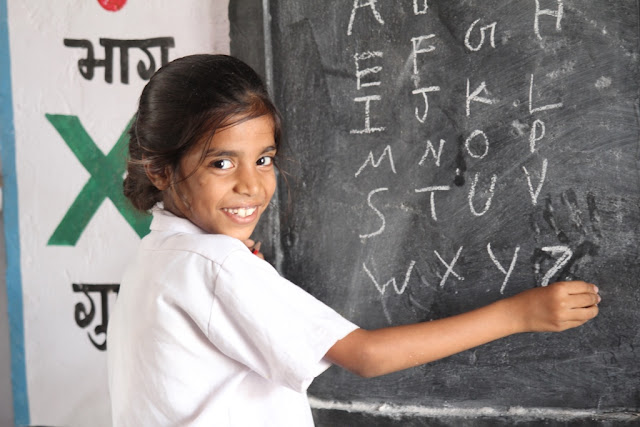Girls are as
important as boys. But many of us are yet to completely accept the fact and in
several parts of India, girls are still considered as a burden to the family
and treated inferior to boys. Moreover, they are denied some basic rights of
children like education, freedom and nutrition.
Changing this picture is the main aim behind observing the National Girl
Child Day on January 24 every year in India.
Compared to the
past, the situation has improved significantly. However, we still have a long
way to go to make our nation a better place for girls. There is no doubt that we
will reach our destination one day. But to achieve this faster, we have to take
care of several elements mainly education for girls.
This is because
education is best way to empower girl children or achieve gender equality. An
educated girl is not only an asset to her family but to the whole community. Education gives girls the confidence and
skills to work, manage and run a family and help in the betterment of the
society.
Interestingly, educating
a girl can help avoid some issues our society is currently facing including
early pregnancy, malnutrition and infant mortality. Also investing in a girl’s
education can bring more returns than that of a boy. Research shows that an extra year in
schooling leads to 15 percent increase in a woman’s future earnings compared to
the 11 percent in men.
Undernutrition
is another issue which affects girl children in India. Shockingly, about 47% of
teenage girls in the nation are underweight. An undernourished girl child will
grow up as an undernourished mother and will give birth to stunted children.
Similarly, child
marriage and early pregnancy are the other two issues which haunt Indian girls
today. Millions of girls are still married off before 18 and become mothers at
an early age.
In an effort to
solve these issues and to highlight the importance of education for girls, the Indian
Government has introduced several schemes. ‘Beti bachao, beti padhao,’ ‘Sukanya
Samriddhi Yojana (SSY), ‘Nutrition programme for adolescent girls,’ ‘The Rajiv Gandhi Scheme for Empowerment of
Adolescent Girls (RGSEAG) – Sabla’ and the ‘National Scheme of Incentives to
Girls for Secondary Education’ are some of them.
Also some NGOs
have come forward to help girls. The
Akshaya Patra Foundation is one of them. The NGO’s Mid-Day Meal Programme has
helped improve girls’ education, helped bring them back to school and boost the
nutritional status of girl students.
Educate Girls, Nanhi
Kali, Rasta, Save a Girl Child, Plan India are some of the other charities who
work for gender equality, girl’s education and welfare of girl children in
India.
Despite all these efforts, India is still considered
the worst country in the world for girls. On this Girl Child Day, let us change
this image -join hands, fight these issues together and provide education for
girls, so that India will become a dream land for girls across the whole world.







